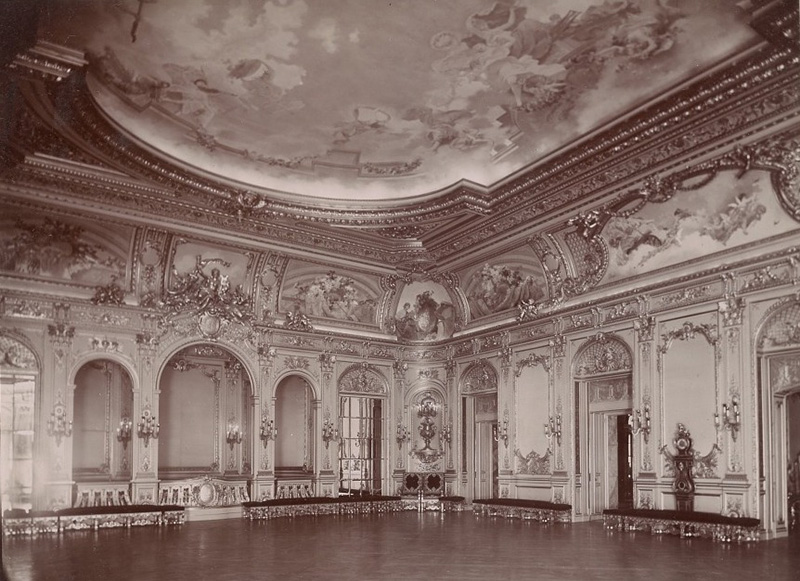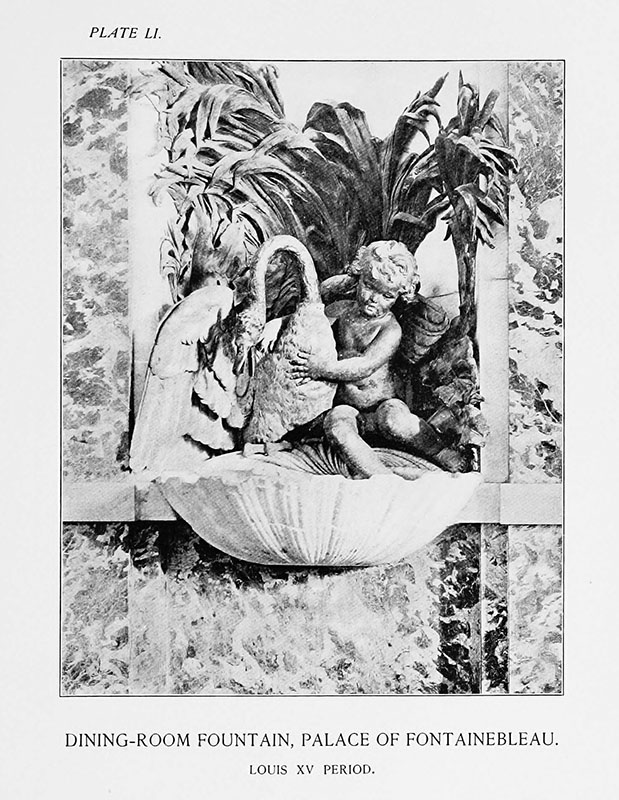French Interiors for an American Gilded Age
by Laura C. Jenkins
From the early 1880s onward, the movement of French 18th-century decorative arts from Europe to New York coincided with a growing fashion among the wealthy of that city for rooms in French historical styles. Assisted by decorator-dealers such as Jules Allard (1832–1907) and Joseph Duveen (1869–1939), the Vanderbilt and Astor families created private ballrooms, salons, and bathrooms that were reminiscent of the courts of Louis XIV, Louis XV, and Louis XVI. Although these rooms were inspired by actual interiors, preserved after the French Revolution by Imperial and Restoration régimes, they were also the product of 19th-century imaginations.
Taking these New York interiors as a starting point, my PhD project examines the contribution of French 18th-century decorative arts and interiors to the so-called Gilded Age. Focusing on palace homes or mansions built on Fifth Avenue, I analyze the historical models used for various “Louis” decorative schemes and the commercial circulation of these models through travel and print media. My project investigates the points of departure that transformed resultant designs from archaeological reproductions to artistic innovations—from old to new, French to American. The purpose of the study is twofold: to create a factual account of some of the most influential period-style interiors produced during this era and to elucidate the critical role played by historicist décors in the materialization of a “civilized” society.
Industrialist millionaires’ taste for sumptuous French furnishings is well-documented. As early as 1873, Mark Twain and Charles Dudley Warner acknowledged a relation between New York’s high society and the Bourbon monarchy’s characteristic ormolu decoration with the title of their novel The Gilded Age: A Tale of Today (1873). In their authoritative treatise The Decoration of Houses (1897), Edith Wharton and Ogden Codman Jr. described drawing rooms on the scale of royal suites as the purview of “the rich man.”1 In the 1980s, these writings laid the foundations for architectural and material culture scholarship alternately aimed at celebrating and critiquing the artistic and social excesses of the late 19th century in the United States.
Lesser known are the details of how specific French manufactures (whether structural or ornamental) became known to individual patrons, why particular themes and sources were favored over others, and who was responsible for various aspects of interior design. Fieldwork is essential to rediscovering these details, and with the generous support of a Research Grant from the Decorative Arts Trust, I was able to travel to France to survey and photograph several locations that impacted Gilded Age practice. Among the sites visited were the Hôtel de Toulouse (Banque de France), Hôtel de Soubise (Musée des Archives Nationales), Hôtel de la Marine (Centre des Monuments Nationaux), and Petit Trianon (Château de Versailles). Coincidentally, the Trust visited the latter two during the Fall 2023 Study Trip Abroad.
At the Hôtel de Toulouse, a tour of the Galerie Dorée (figure 1) shed new light on old assumptions regarding the model for Cornelius Vanderbilt II’s ballroom at 1 West 57th Street (figure 2). Comparing unpublished photographs with extant wood panels (called boiseries) made it possible to identify, for the first time, changes to motifs previously thought to have been cast from, or carved after, antique originals as copies. Combined with known alterations to the scale and treatment of wood paneling generally during the 19th century, these insights will add significantly to the understanding of iconographical customization for individual projects.
An oft-overlooked feature of the Hôtel de la Marine (figure 3) affirmed the importance of print culture in disseminating French style. Consisting of a marble basin surmounted by a putto and swan, the wall fountain is similar to one which appeared in Wharton and Codman’s treatise as an illustration for dining room equipment in the Louis XV style (figure 4). Versions of the fountain would later appear in Codman’s designs for the homes of wealthy clients, in novel forms such as bathroom washstands, drawing connections between architectural and graphic arts.
There were also surprises in store. As the majority of Fifth Avenue mansions were demolished beginning in the 1920s, the material remains of their interiors have been scattered. This is particularly true of woodwork, which, executed in large quantities for formal mansions, was (where salvaged at all) subsequently sold in smaller lots, often without detailed records. Visits to private collections in Paris resulted in unexpected encounters with fragments of Gilded Age suites. These encounters indicate that some woodwork made for New York interiors was brought back to France after those rooms were broken up. Attribution of the fragments to their respective manufacturers helps to fill in gaps in the ownership history of Gilded Age paneling from the 20th century to today.
Findings from my trip will form a valuable part of my dissertation and planned book. I am grateful to experts in Paris for sharing their knowledge and to the Decorative Arts Trust for supporting my travel.
- Edith Wharton and Ogden Codman Jr., The Decoration of Houses (New York: Charles Scribner’s Sons, 1897), p. xxi.
Laura C. Jenkins is a PhD candidate at The Courtauld Institute of Art.
A print version of this article was published in The Magazine of the Decorative Arts Trust, one of our most popular member benefits. Join today!




